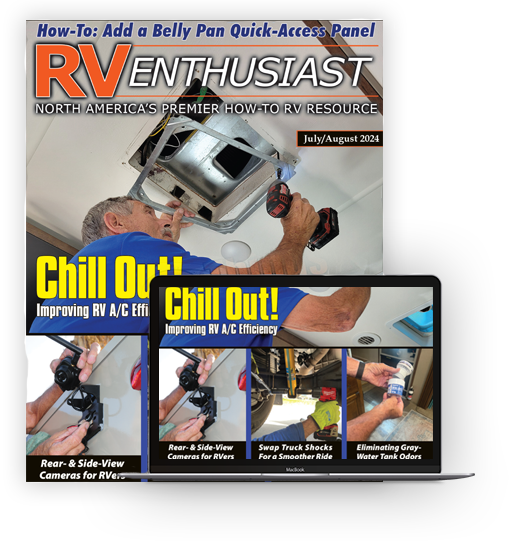Smooth Operator
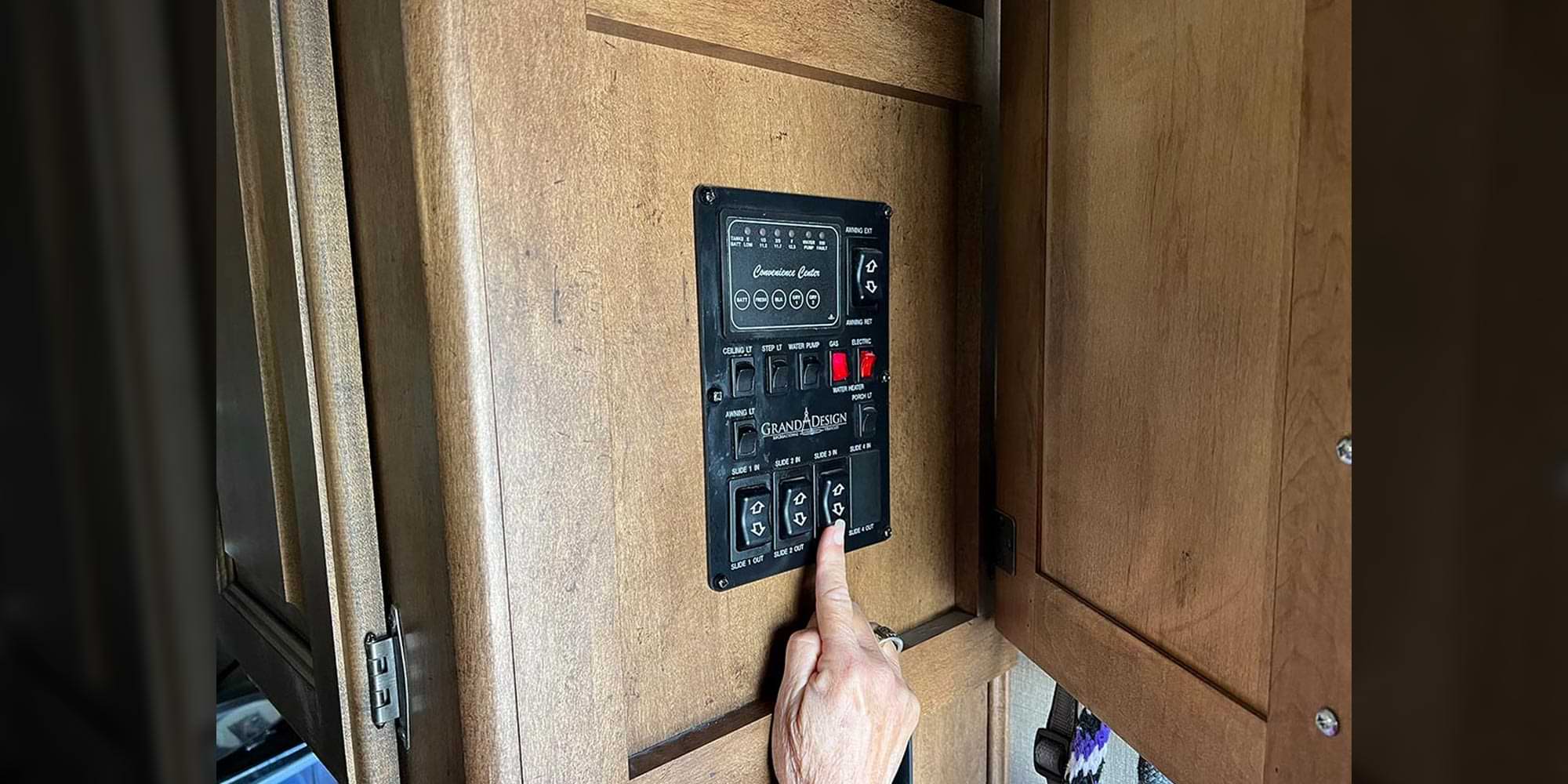
There’s nothing worse than trying to vacate an RV site only to find that the slide-out will not retract and the park manager is grinding on you to leave to make way for the next renter. While most slideouts have override provisions to manually retract the room, the Schwintek is a different animal, requiring more basic measures: pushing by hand. And, of course, Murphy’s Law dictates that the slide failure occurs where there are obstructions that can prevent you from physically pushing in the slide out — which in the best circumstances can take two or three strong people. Trying to push in bedroom slides that are out of reach can be even more problematic.
Schwintek slideout systems can be found on many RVs and generally are very reliable — but, like all mechanical components, they are not immune to failure. Fortunately, these systems are not complicated and can be diagnosed without special equipment. Motor synchronization will help eliminate many of the common problems if you refrain from extending or retracting the slideout part way followed by stopping and reversing the direction, which can confuse the motor sensors. Also, this system can make loud noises while moving in and out, which generally is not something to be overly concerned about.
Troubleshooting the Schwintek
If something goes wrong, the first step is to locate the controller. Most manufacturers mount the controller in a nearby exterior compartment (although it can also be mounted inside the rig, behind a trap door inside a storage cabinet). Generally, these control boxes are mounted near other 12-volt DC equipment or a breaker panel. In some cases, these control boxes are hard to locate; you may be able to hear a clicking noise and follow the sound to where the box is mounted.
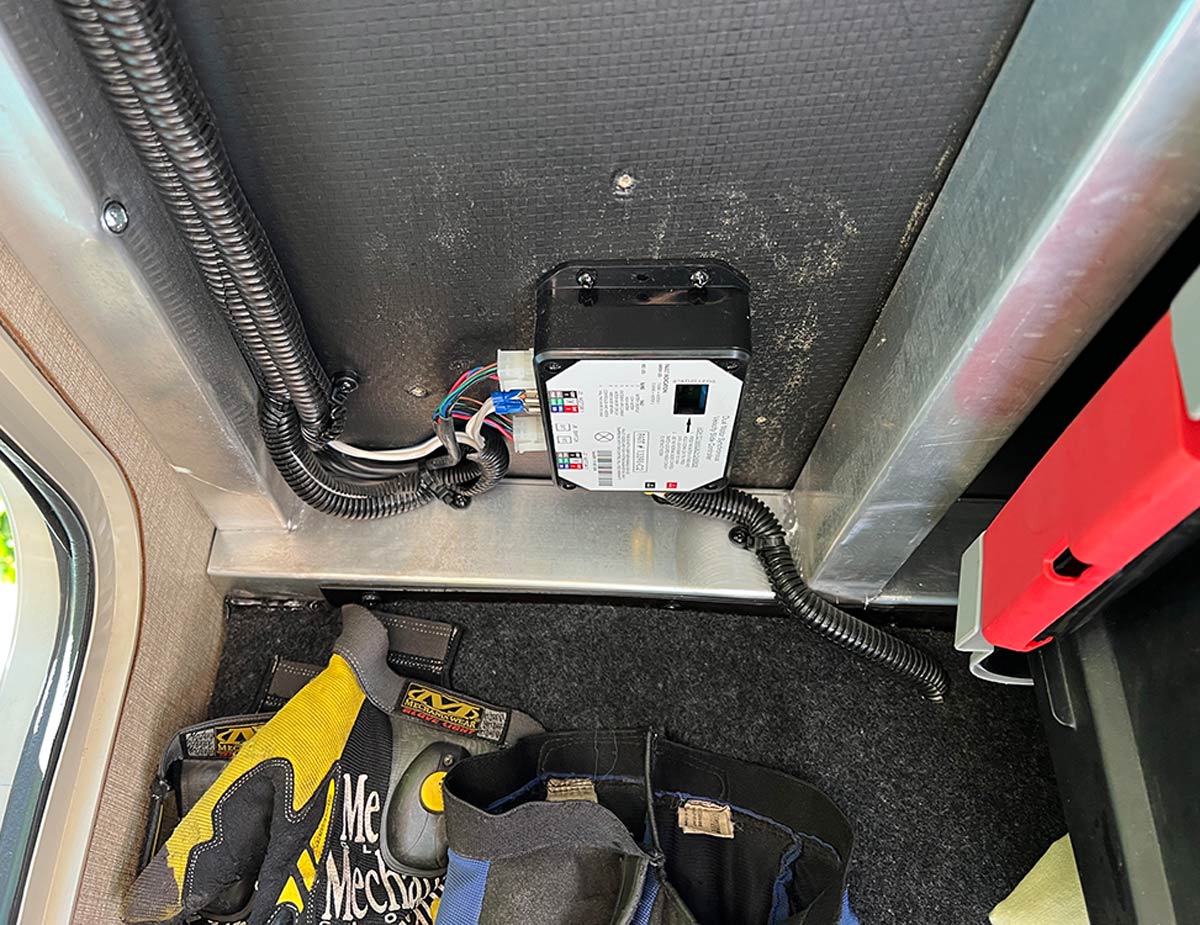
Rather than assume that the motor is defective, use 12-volt DC jumper wires to bypass the system and power the motor independently after disconnecting the harness/plug. At first, just tap one set of leads in case the motor runs; if the slideout is all the way in or out, the motor will shut off quickly. The motors have a wheel on top with sensor wires that signal the control board to determine if they are functioning properly. If one or both motors fail to turn, there may be an issue with the wiring harness or the motor(s) itself.
At this point, you’ll want to confirm whether the motor(s) is not working. This can be done without removing the motors — but you’ll have to be careful not to spin the motor(s) for more than an instant or you’ll throw it out of sync. Separate the connector at the motor and apply 12-volt DC power to the red and black leads (positive and negative, respectively). If the motor turns for a quick moment, plug the connector back in and go back to the control board; separate the connector there and apply 12-volt DC power to the red and black leads going to the motor (not the control board). Ask someone to listen to the motor inside while you touch the 12-volt DC power leads to the red and black wires. If the motor turns, then the problem is with the control board; if it doesn’t, the problem can usually be traced to the harness or the connectors at the control board or the motor. Preferably, this procedure should be done with the motors removed with the slideout partially open, but that will require quite a bit more work.
Above all, be careful: The wires that connect to the motors are rather delicate and can be separated and/or broken when the connectors release or if the retention screw that holds the motor in place dislodges and allows it to spin while the gear is seated. In this scenario, the wire will wrap around the motor and eventually pull apart. This will be evident if you pull the inside seal back and look at the wires and connector. In most cases, the wires cannot be repaired (unless there’s adequate room). The wires are light gauge and the connector is fragile, so it may be necessary to replace the motor. If there’s enough room to work — and you don’t have a replacement motor handy — you may be able to solder the wires and protect them with shrink tubing or use small butt connecters; in either case, you’ll end up with a permanent installation and you will need to cut these apart should the motor need replacing down the road. It’s best to carry a spare motor because it may be hard to locate one quickly. These motors are available from Amazon and Lippert Components (store.lci1.com).
If the control board lights identify an out-of-sync situation, you will need to sync the motors. There’s no particular reason (other than the scenario mentioned earlier) why the motor can become out of sync. Once the motors are out of sync and the sensor wheel on top of the motor tries to rectify the situation a few times, a signal will be sent to the control board and go into lockout. At this point, you will need to reset the board and sync the motors.
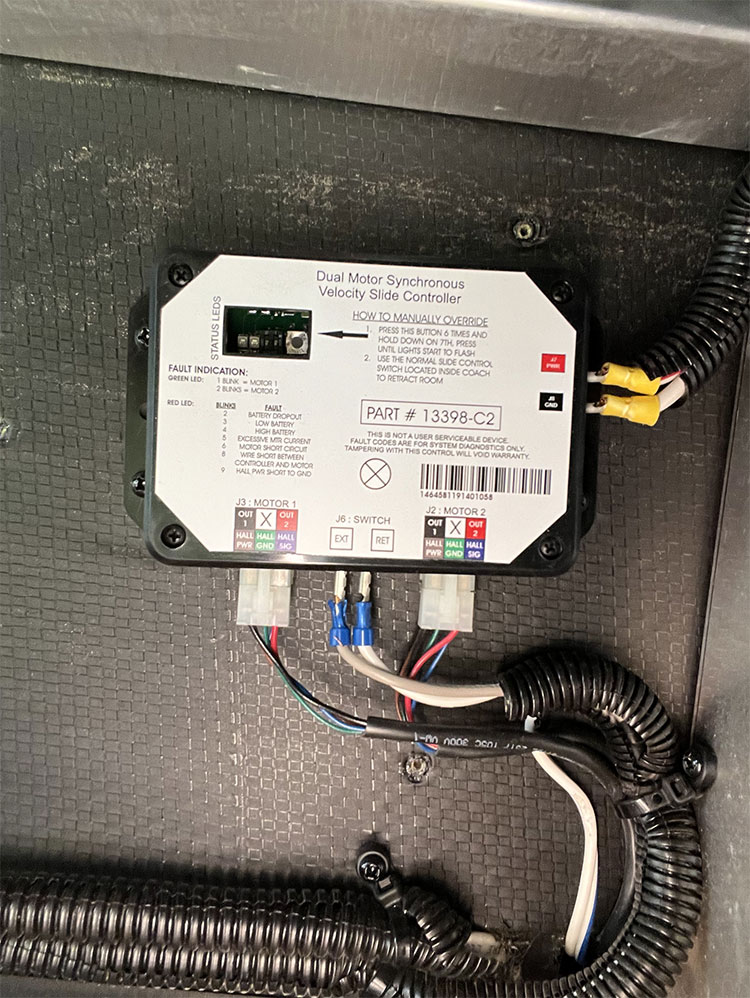
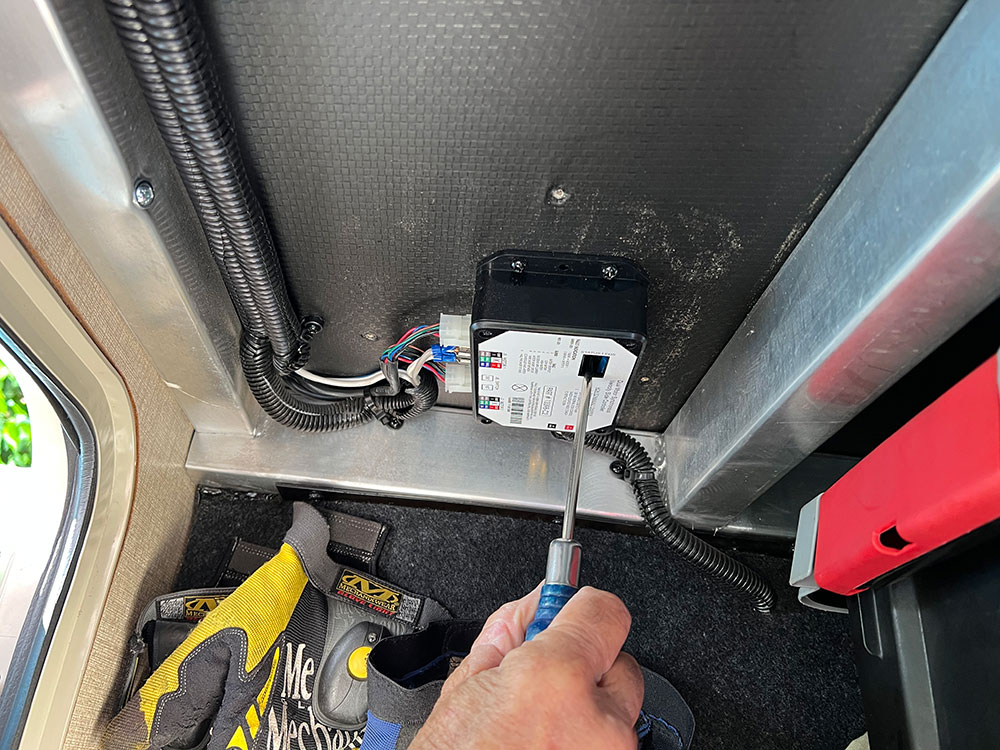
Replacing the motor does not require a heavy mechanical aptitude, but — depending on where the access points are located in relation to adjacent obstructions — it may be difficult to reach. It’s not uncommon for one side or the other to be up against the wall or a cabinet, which will restrict access and make it more difficult to remove the motor. When working inside the RV, the slideout needs to be about 3/4 of the way in, which will level it out a little bit more and take some of the pressure off the motor that’s connected to the gear block. Next, you will need to go outside and peel the D seal on each side of the slideout away from its H-column; normally the seal is snapped or slid in place and not usually glued. However, some manufacturers may put another screw to hold the D seal in place or apply a dab of sealant at the ends.
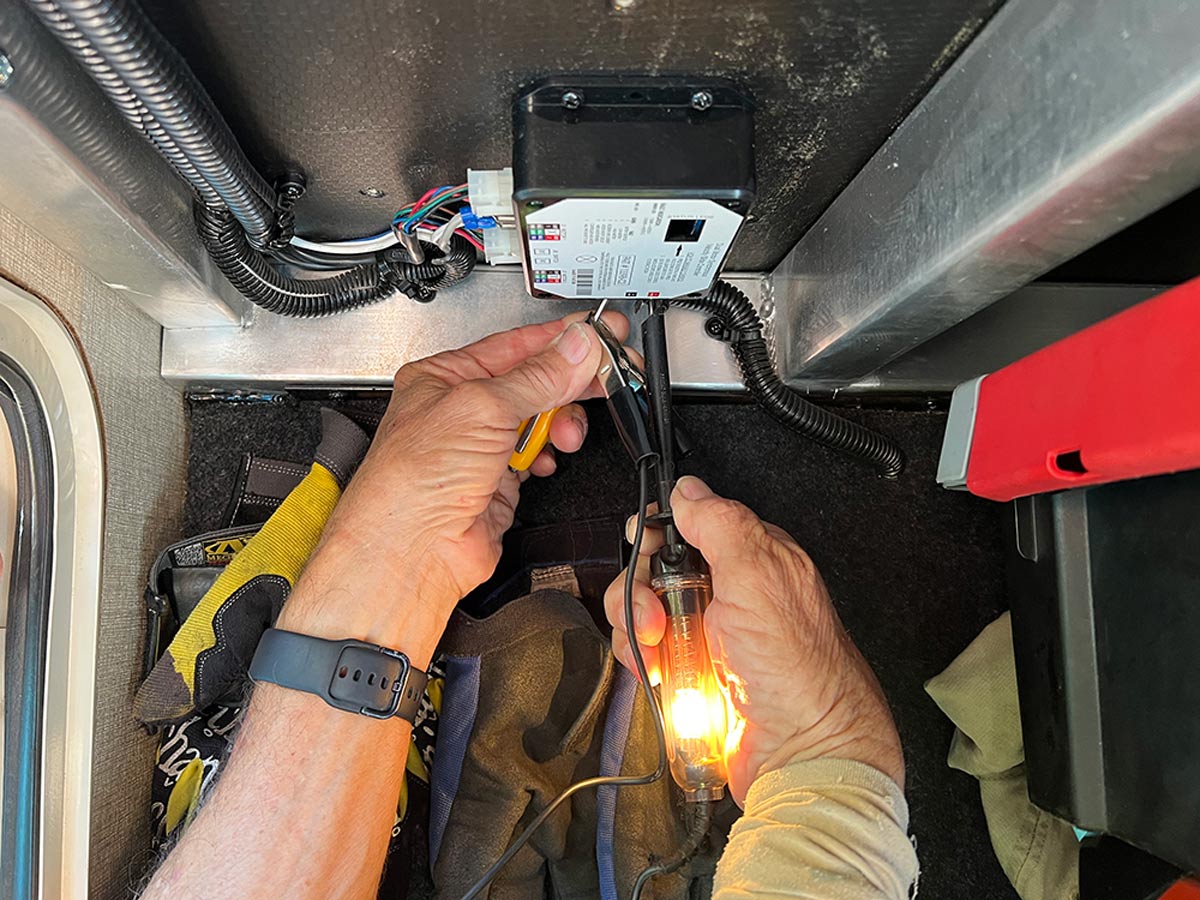
With the motor in hand, simply reverse the removal process. Of course, Murphy being the guy he is, the D-shaped gear on the motor will probably not line up so you will need to plug it in to the harness and have somebody bump the switch until the flat part of the gear on the motor lines up with a flat part in the gear block — at which time the motor should drop right in. The gear block and the gear on the motor do not need any lubrication, but I do like to spray a little bit of silicone in this area to protect against rust. Once the motor(s) is installed you will need to sync it with the control board.
If the motor is not accessible from the inside, the procedure can be done from the outside, but you’ll have almost no room to pull the motor out. You may need to remove the D-seal and the H-column to remove the motor from the outside.
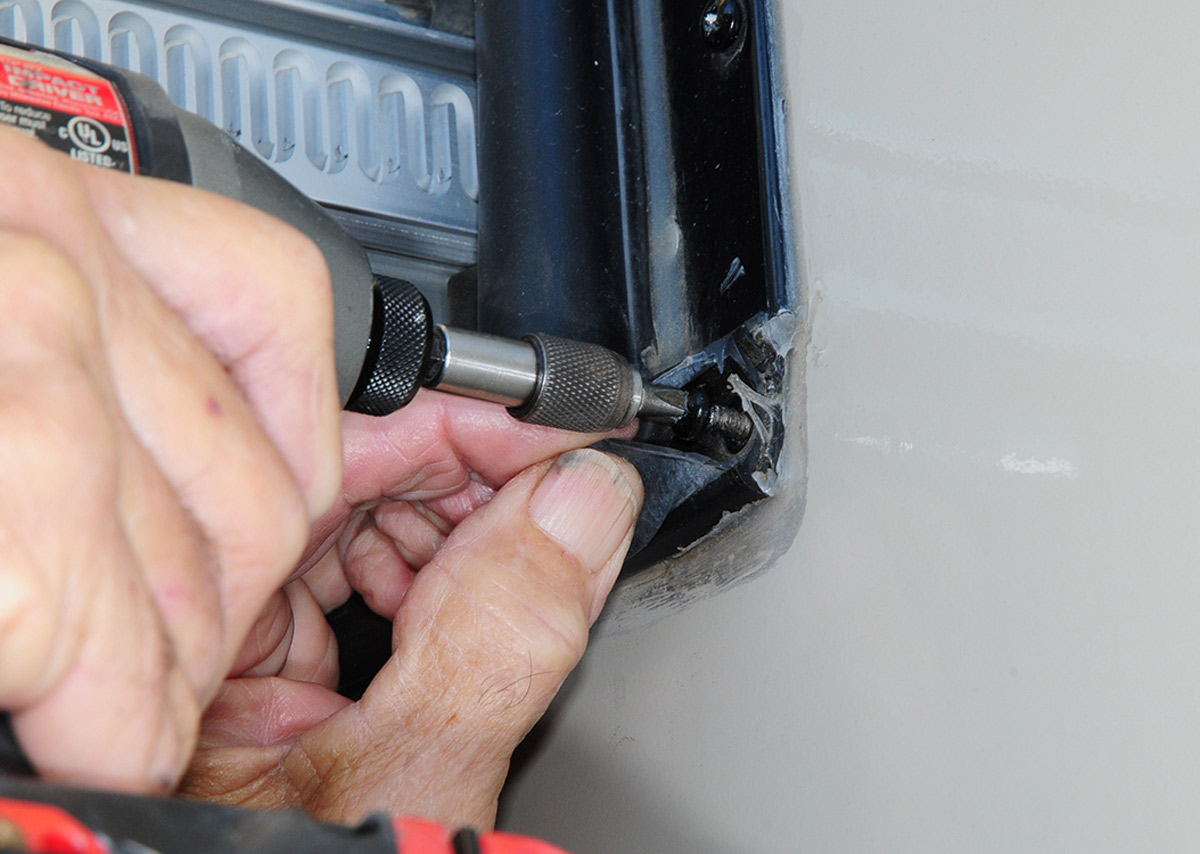
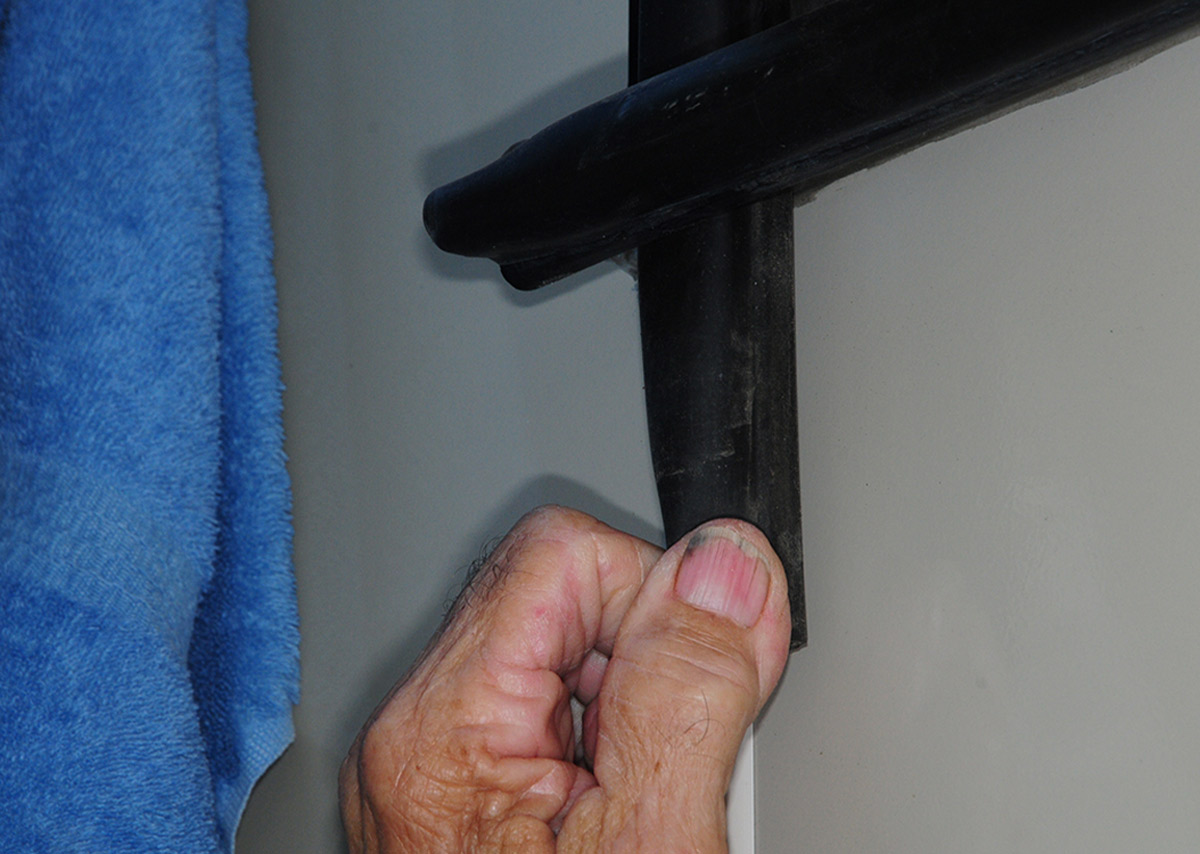
While repairing the system is the best remedy, it may be necessary to close the slideout manually in an emergency. The alternative — to get you out of a jam — is to ask a couple of people to help push. Normally, only one motor will fail — and once it’s removed, one or two people can push on that side while another person bumps the switch so the good motor does half the work. During this process, however, the control board may go into lockout and need to be reset. The other method is to remove both motors and push on the slideout. Again, it may be difficult to push the bedroom slide on a fifth wheel that’s 8 or 10 feet off the ground.
It almost goes without saying, but I’ll say it anyway: The slideout must be secured if the motors are left out while traveling to a repair center. This can be done by cutting 2 x 4-inch blocks of wood and mounting them to either side of the slideout to prevent it from moving outward. I suppose you could tape the perimeter of the molding with duct tape if you’re going only a short distance, but then you’ll undoubtedly wind up cleaning up a big mess later. It’s not a bad idea to keep a couple of these pre-cut blocks of wood stashed away in your storage bin in case you run into trouble down the road.
Slideout Maintenance
One of the good things about a Schwintek slideout system is that, unlike a rack-and-pinion system, there is not much needed maintenance. The main focus is keeping the upper and lower gear racks on both sides of the slideout room free of dirt, grease, oil or any other type of contamination. They do not need to be lubricated because the gears mesh precisely with the gear racks. It’s possible that a little bit of dry lube could help if the noise is driving you crazy, but be careful that it does not collect dust or dirt. The only other maintenance procedure is to use a silicone-free protectant on the seals around the slideout rooms; this will help D seals last longer and protect some of the wiring running up through the H-columns. Replace the D seals at the first sign of deterioration, which will likely show cracking and ripping at that time.
Obviously, there are many videos showing this process online, but not all are accurate. My best advice is to log on to Lippert’s website (www.lci1.com) and check out the recommendations provided by the company’ support team. Being prepared will take the sting out of any Schwintek hiccup and keep the mechanism working smoothly for years.
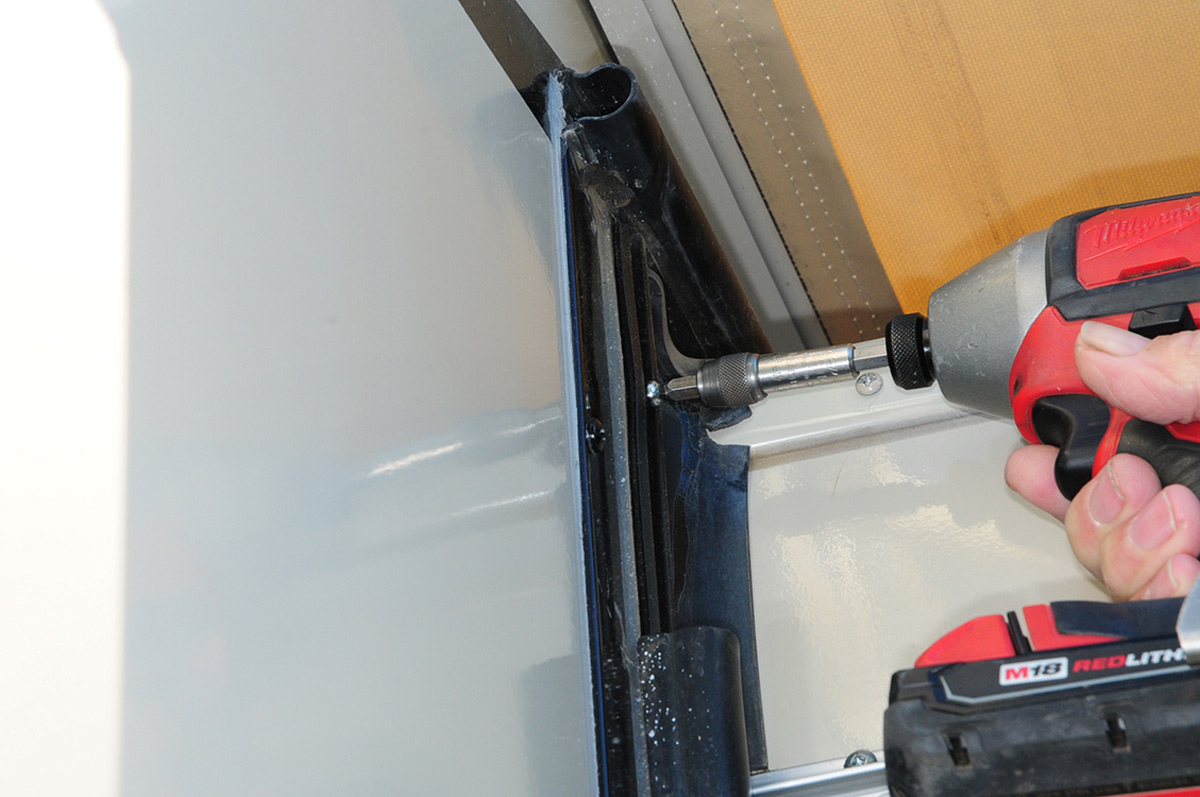
The screw that holds the motor in place on each side was removed through the H-channel. The motor cannot be released from the gear block without removing the screw on each side of the slideout.
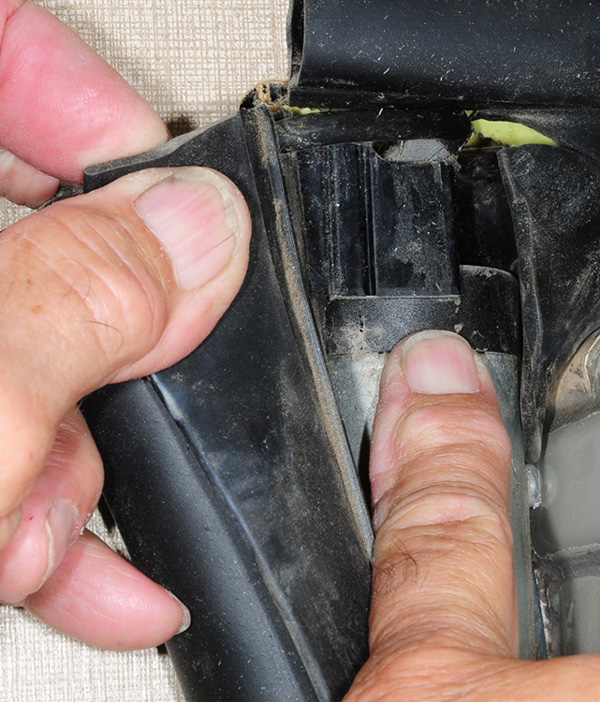
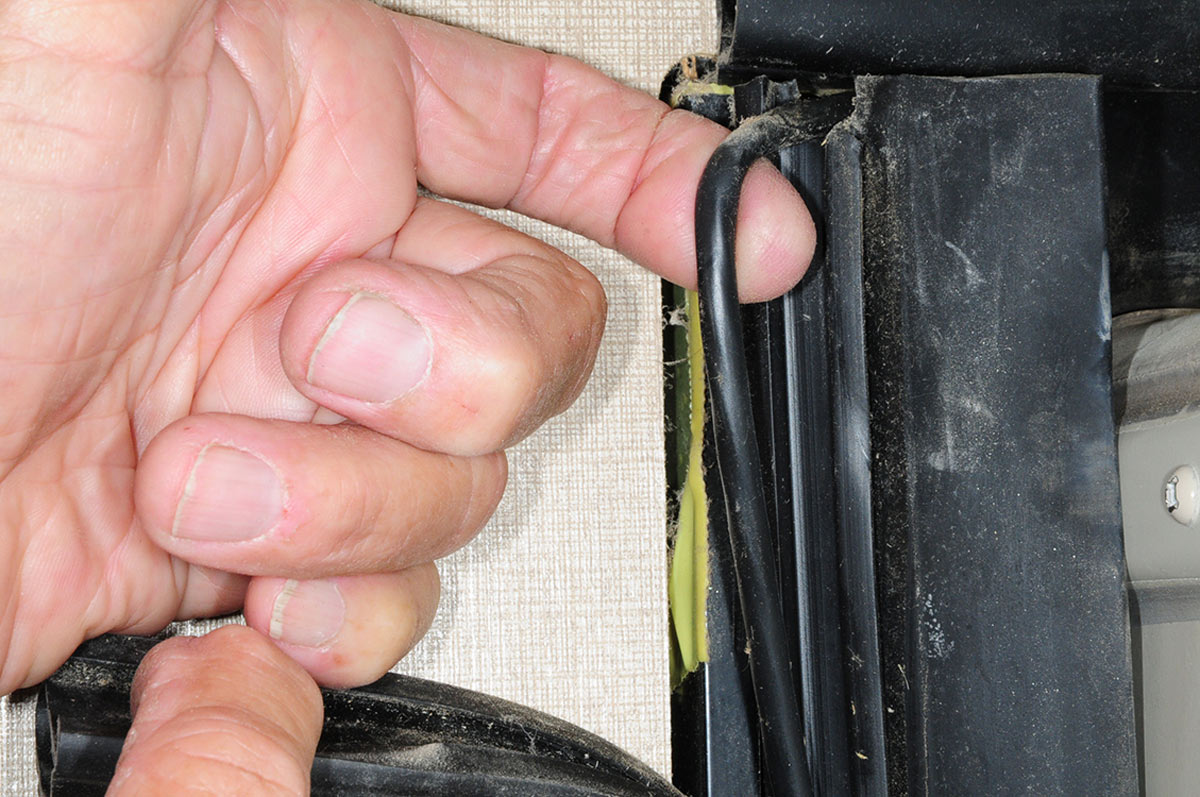
The insulated wiring harness can be lifted from the seal area and traced to the motor. Here, the connector was on the other side of the motor and not accessible until the motor was removed. Wire position will vary.
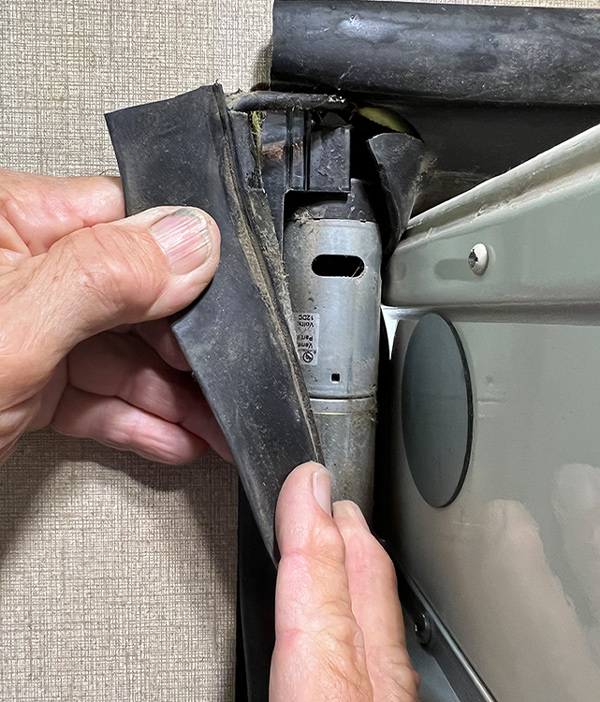
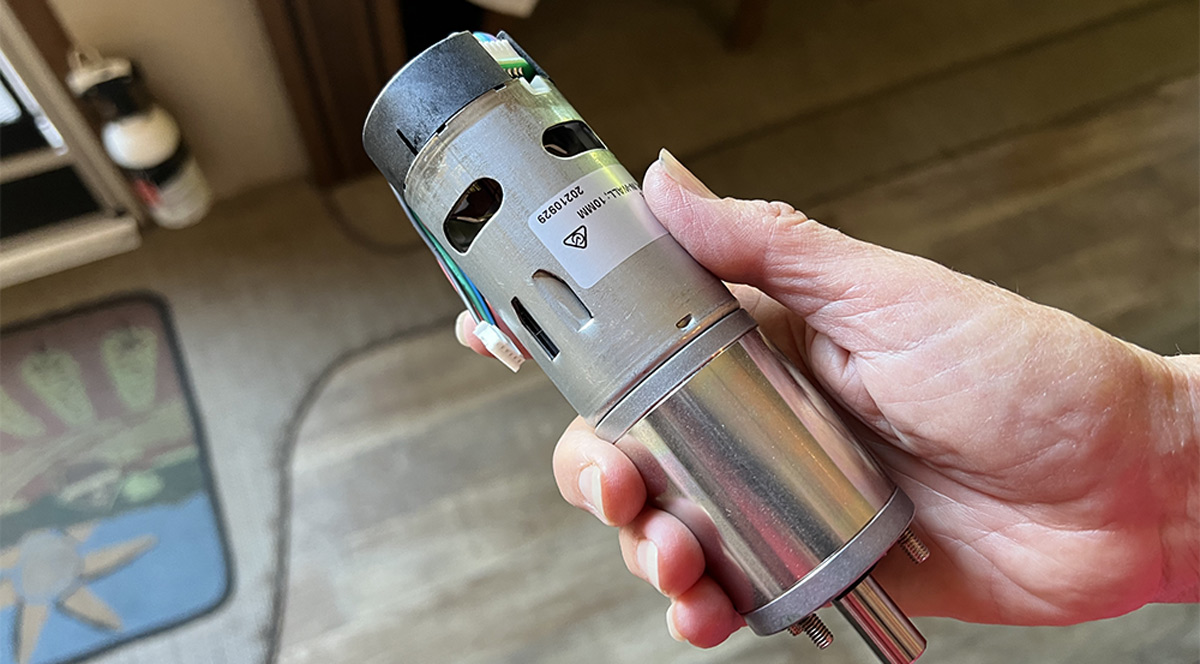
The motors that control slideout movement are surprisingly compact but powerful. It’s best to keep a spare motor in your storage compartment. While the system can field repaired, the biggest problem is often finding a replacement quickly.
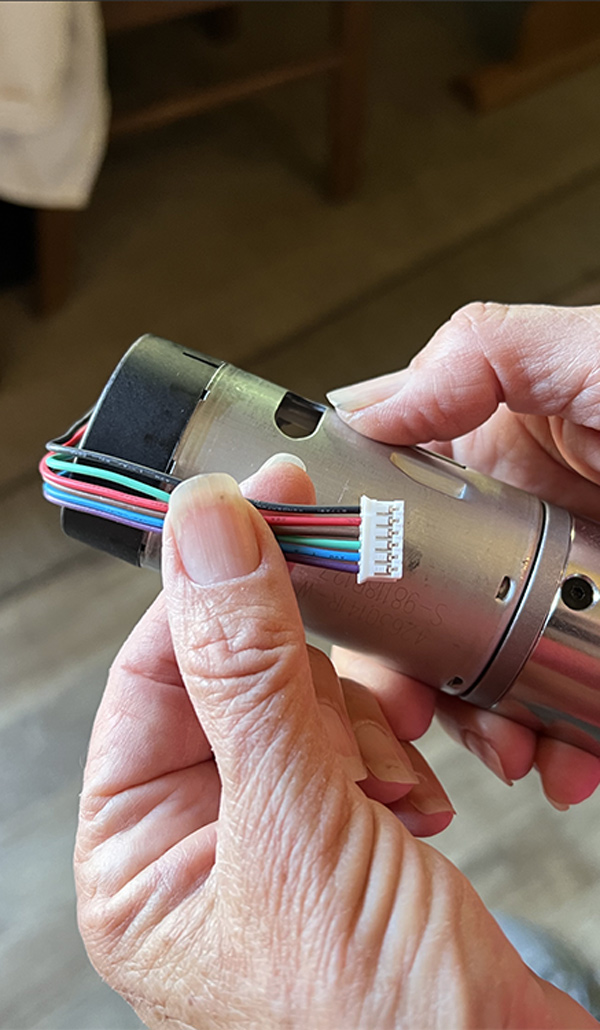
Motor wires are on the fragile side, along with the connectors. These wires are used to power the motors and communicate with the controller. If a wire breaks, it may be possible to fix it with solder or a small butt connector, which is much cheaper than buying a new motor. Of course, doing this will require cutting of the wires if the motor needs to be replaced down the road.
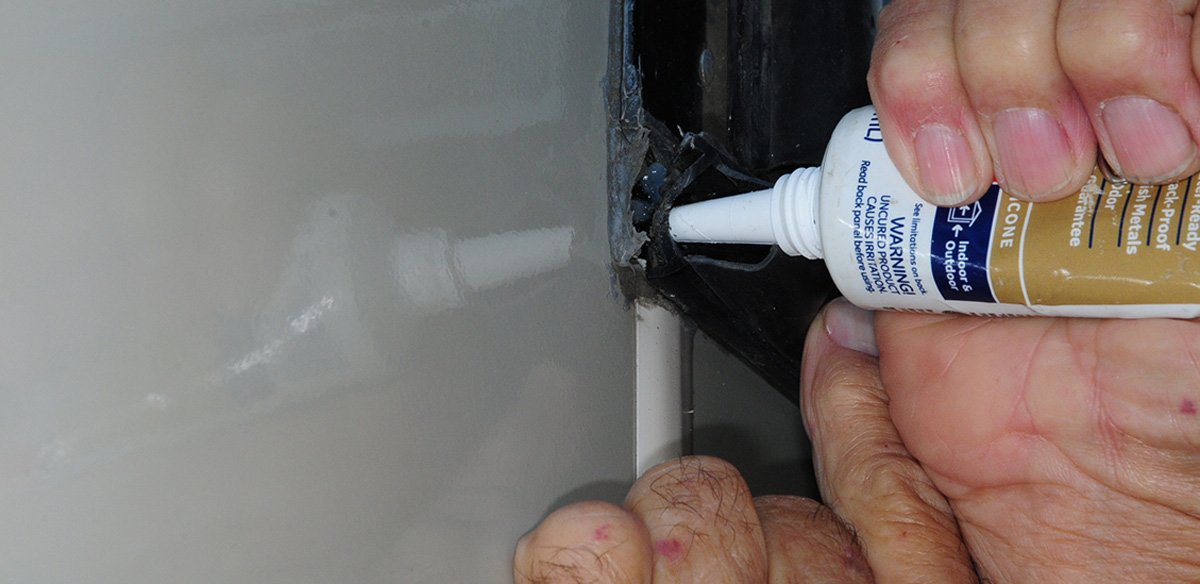
Once the motors are tested or replaced, the retention screw is reinstalled through the H-column on each side. Any screws that were removed from the area are sealed with silicone sealant before tightening.

The motors that control slideout movement are surprisingly compact but powerful. It’s best to keep a spare motor in your storage compartment. While the system can field repaired, the biggest problem is often finding a replacement quickly.

Once the motors are tested or replaced, the retention screw is reinstalled through the H-column on each side. Any screws that were removed from the area are sealed with silicone sealant before tightening.

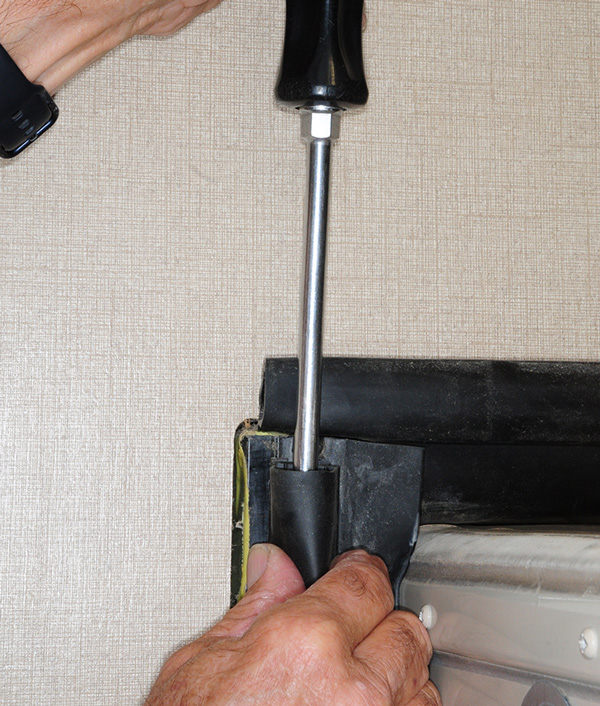
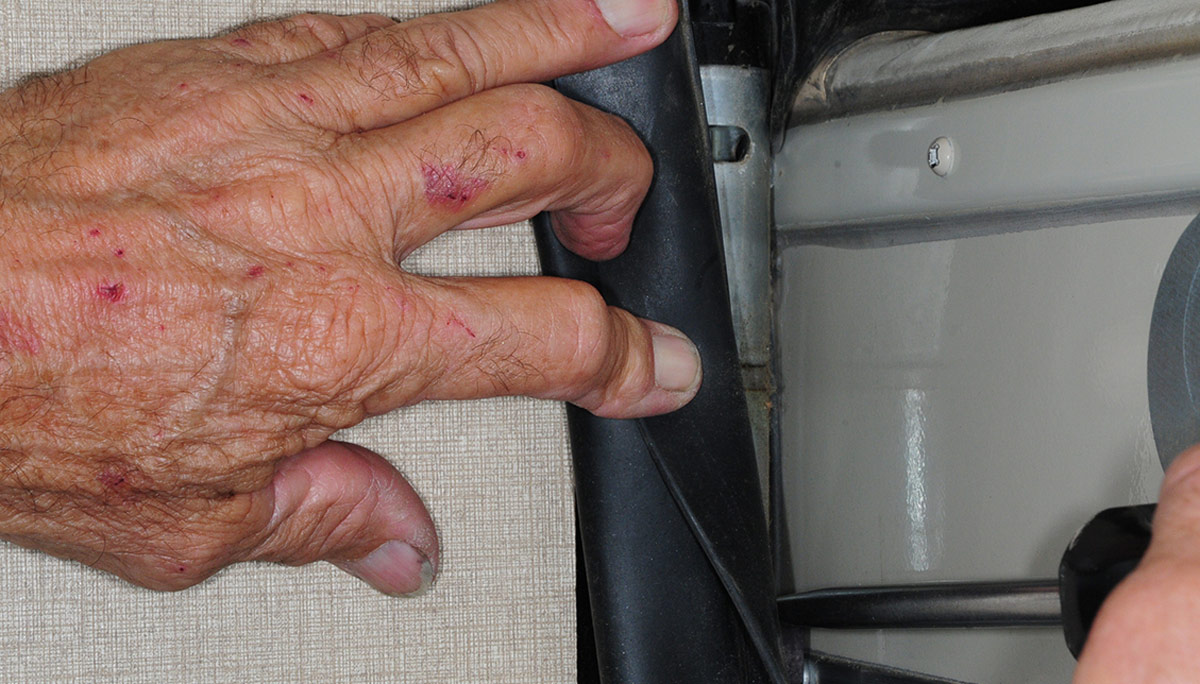
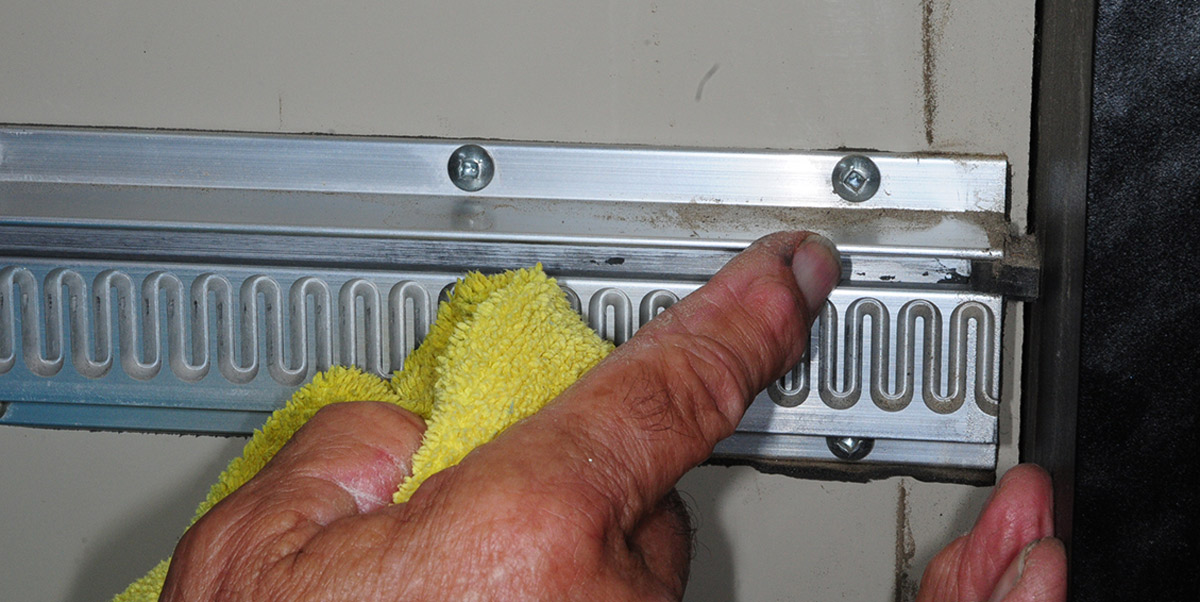
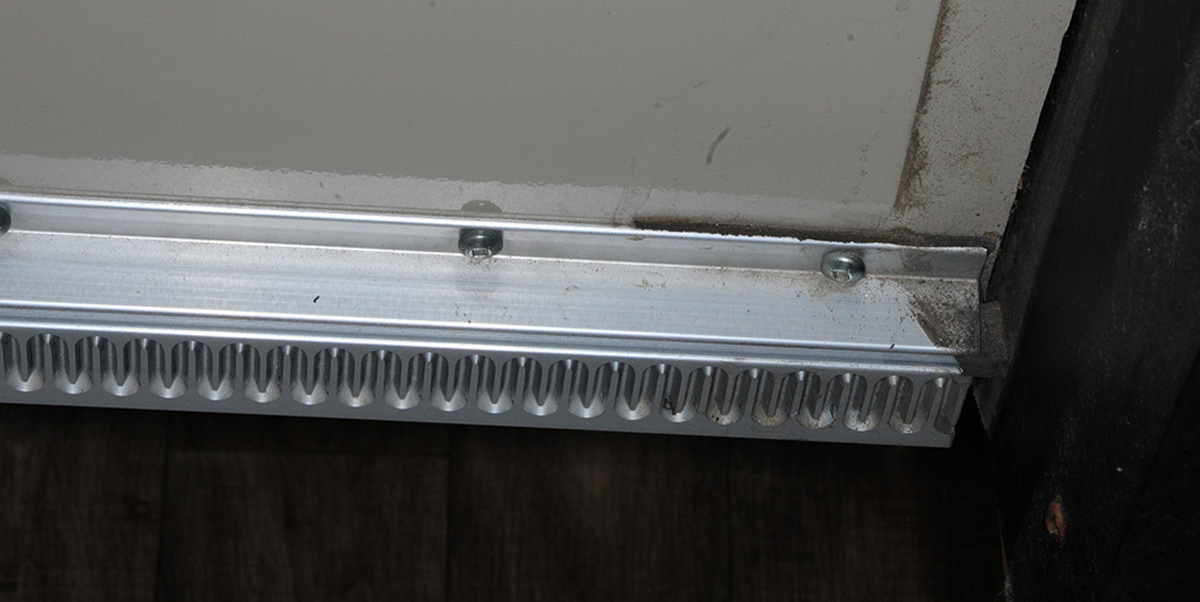
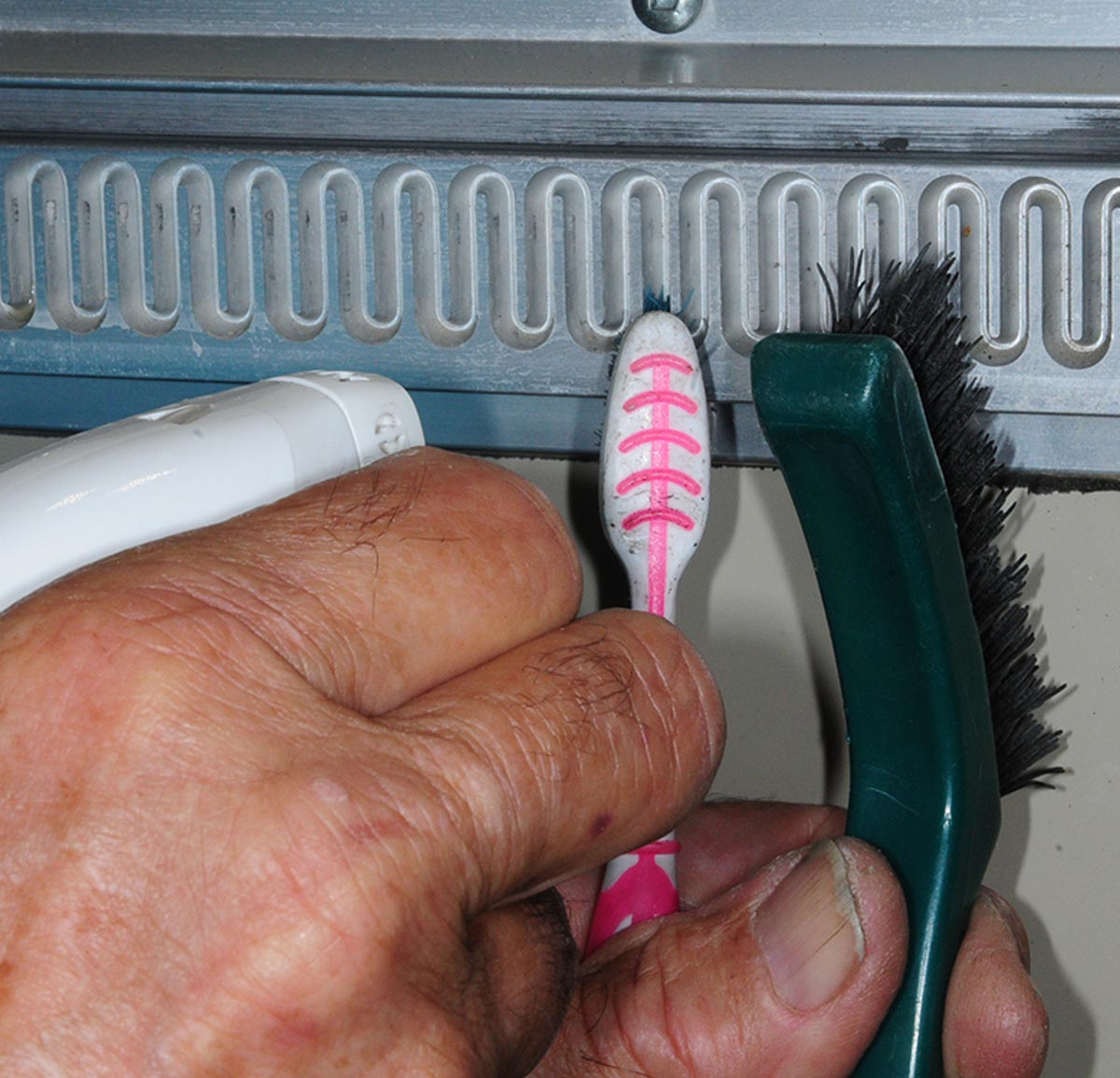
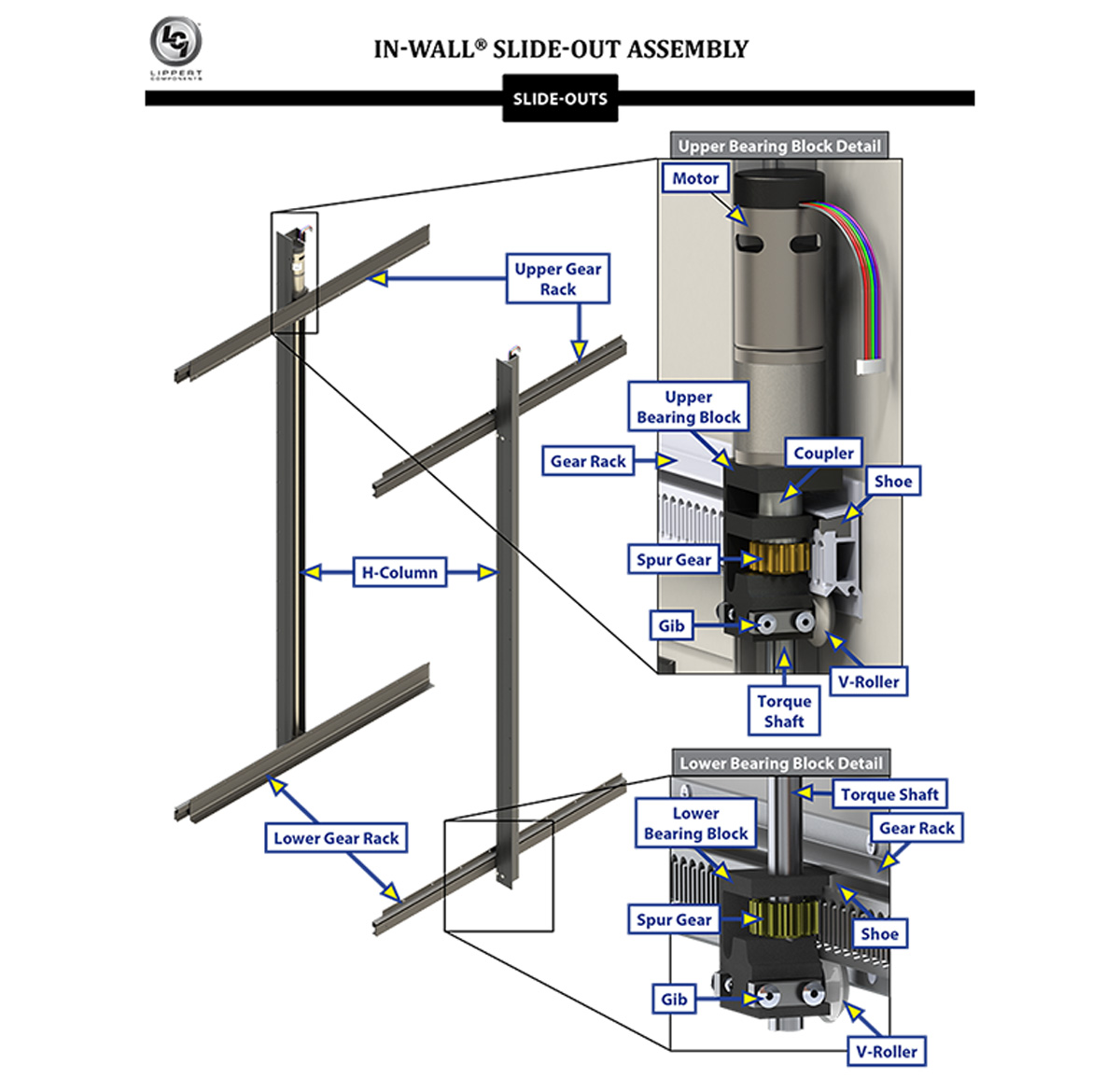
Already a Subscriber? Click here for Access to the Full Issues.

